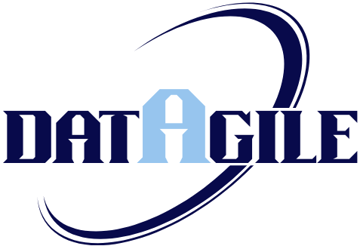Data Design
We help by creating a visual representation of your data and relate it back to your business understanding of that data.
Data models are a fundamental part of software development and analytics, and they help ensure data integrity and consistency.
Data architecture is a framework that defines how an organisation manages its data, including how it's collected, stored, and used.
Datagile can define the structure, organisation, and design of your data assets. Establish the rules, policies, and standards for managing and using your data. We can map how data moves through your organisation.
We'll specify standards for storing your data and methods for accessing data.
Datagile will create a blueprint for your system or application to solve your business problem. We will define the requirements, architecture, design, testing, and implementation of the solution.
In doing this we can help: keep your projects on time and on budget, ensure the solution is scalable, reliable, secure, and maintainable, meet your business goals, reduce risk and enable your existing processes to be used more efficiently.
Data Architecture
Solution Design
Data Modelling
What are the business benefits of better data design and architecture?
Improved decision-making
A well-designed data architecture can help businesses gain a comprehensive view of important data, such as revenues and expenses. This can lead to better strategic planning and operational decision-making.
Reduced data silos
Data architecture can help reduce data silos by establishing flexible integration across data domains. This allows different parts of a business to communicate more effectively and see each other's data.
Improved data quality
A good data architecture can help improve data quality by providing a framework for how data is collected, stored, secured, and used.
Reduced storage costs
A well-designed data architecture can help reduce data storage costs.
Increased data consistency
A good data architecture can help increase data consistency across systems.
Better collaboration
A good data architecture can help improve collaboration on data management and governance.
Effective data governance
A good data architecture can help ensure effective data governance.
Compliance with regulations
A good data architecture can help ensure compliance with regulatory standards



Why data design matters?
Security
A secure database design can protect data from hackers and data leaks.
Efficiency
A well-designed database can help an organization manage its data efficiently.
Growth
A well designed data solution can prevent software from becoming sluggish over time as the business grows.
Data governance
Data governance helps maintain data quality, compliance, security, collaboration, and efficiency.
Collaboration
Data modelling encourages collaboration among business analysts, developers, and stakeholders.
Scalability
Scalability is important for systems that need to handle different types of data and tasks without losing quality or speed.
Customer relationships
Good design can help a business build and strengthen customer relationships.
Visual communication
Great design can be an effective way to communicate ideas and values that might be difficult to express in words
Making Data Work For You
Expertise
Innovation
info@datagile.co.uk
07966 534322
